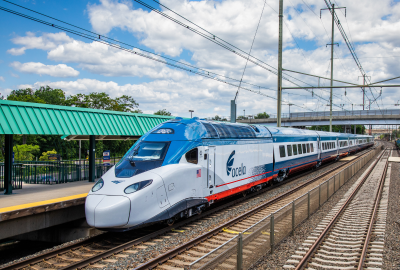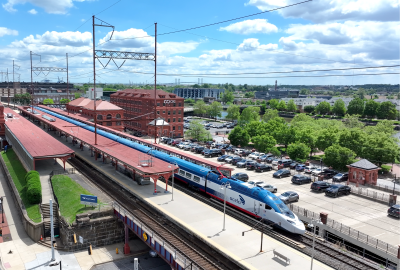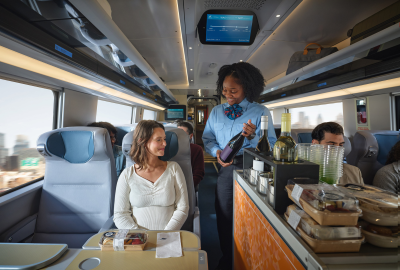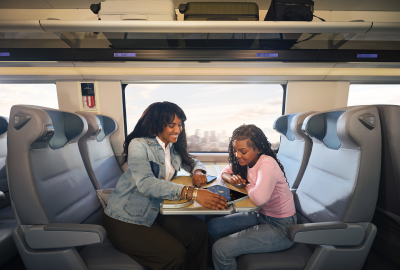Passenger train travel is often thought of as a relic of a bygone era. While major improvements in the passenger train travel arena are being made, there have been notable project cancellations and postponements.
Like the rest of the U.S. government, the Department of Transportation (DOT) is busy cutting waste and assisting with pushing technology forward.
“We want big, beautiful projects worthy of taxpayer dollars – including high-speed rail,” said U.S. Transportation Secretary Sean P. Duffy in a press release on August 1. “We’ll continue to look for exciting opportunities to fund the future of transportation and encourage innovation.”
On August 1, the DOT announced that it was cancelling two grants totaling over $26 million for the Baltimore-Washington Superconducting Magnetic Levitation (SCMAGLEV) Project. That project had been a decade in the making and faced community opposition, cost overruns and lengthy delays. The total cost of the high-speed rail project was estimated to be $20 billion.
Earlier this year, the Trump administration revoked $4 billion in funding for California’s high-speed rail program. And on August 20, the House Committee on Oversight and Government Reform opened an investigation into federal funding awarded to the California High-Speed Rail Authority, looking at whether it knowingly misrepresented ridership projections and financial viability to obtain federal and state funds. According to the Committee, current cost estimates for the project range from $89 billion to $128 billion.
“To date, 463 miles of the 494-mile high-speed rail system from downtown San Francisco to downtown Los Angeles are fully environmentally cleared and construction ready,” a spokesperson for the California High-Speed Rail Authority told Newsweek.
They noted that 171 miles are currently under design and construction, from Merced to Bakersfield, California. Additionally, 70 miles of guideway are complete, as are 55 fully completed structures. The Authority is currently constructing 29 more structures in Madera, Fresno, Kings and Tulare counties.

Amtrak

Amtrak
Amtrak, which receives the vast majority of its funding from the federal government, is on an upswing. The organization expanded the pass availability for its premium lounges nationwide.
Six modernization construction projects are underway, in various stages of development. Three design-build contracts were recently awarded for the Northeast Corridor in Boston, New York, and Washington, DC. Once complete, those areas will support current and next-generation trains. Similar projects in Philadelphia and Seattle are already underway. Upgrades in Rensselaer/Albany, N.Y., are also in the planning process.
Amtrak’s NextGen Acela trains make their first runs on August 28. Twenty-eight of the trains will enter service through 2027 (five are in the initial batch) with 27 percent more seats per departure. They also come with free, 5G Wi-Fi, individual power outlets and reading lights. The NextGen Acela will allow Amtrak to expand its weekday and weekend schedules.
In addition to the NextGen Acela, Amtrak’s new Airo trains are rolling into service. Those trains are on the Amtrak Cascades, Northeast Regional and East Coast routes.
Amtrak intends to add new, more efficient long-distance locomotives to its fleet and upgrade the interiors in coaches, dining cars, sleepers and Sightseer Lounges. New seat cushions, upholstery, lighting and finishes are part of the revisions.

Amtrak

Amtrak
“At Amtrak, we’re building more than ever before and delivering critical infrastructure upgrades which are long, long overdue. Modern trains, enhanced stations, new tunnels and bridges, and countless other improvements are on the way for our customers, thanks especially to strong support from the Trump Administration, Congress, and our many partners around the country. Take a look out the window on your next Amtrak journey and you just might get a glimpse at the future under construction, right before your eyes. This is a new era of rail,” Amtrak spokesperson W. Kyle Anderson told Newsweek.
The post America’s Passenger Train Network Is Getting a Reality Check appeared first on Newsweek.




